10 Advanced Google Ads Tips for Expert Marketers
Google Ads is among the most powerful tools in the online advertising world. It drives traffic, conversions, and brand awareness. However, to unlock its full potential, one needs to step up a notch and embrace more complex strategies. Here are 10 advanced Google Ads tips that should appeal to expert marketers. Learn how to use these best practices to make the most out of your Google Ads campaigns and ensure you’re staying one step ahead of your competitors.
Table of Contents
ToggleWhether you are interested in How To Create Google AdWords advertising, Google PPC pricing, or using the Google Ads tools to optimize your campaigns, these tips will help you create better, more profitable ads. Here, we’ll cover some of the most important facets of Google advertising, such as managing your Google Ads account and choosing the types of ads that best suit your business needs. So, let’s get started.
Use Smart Bidding to Optimize for Conversions
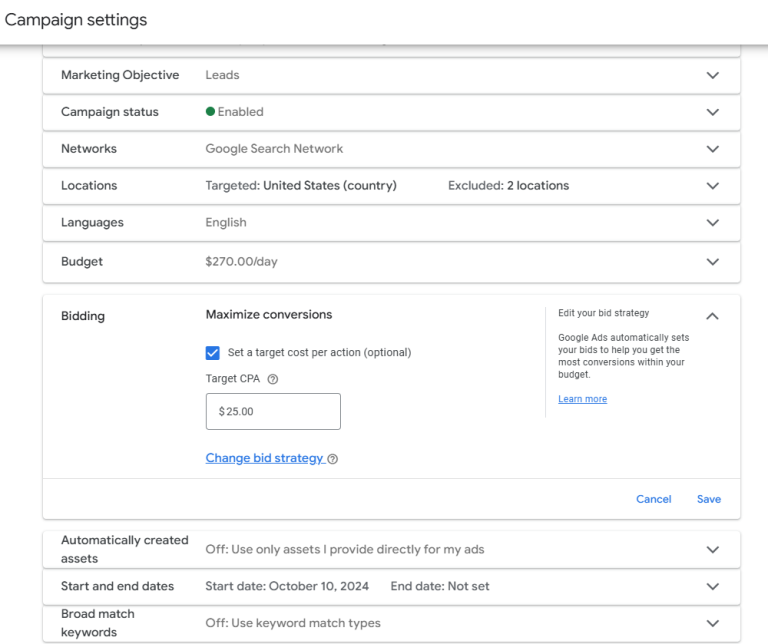
Among the most advanced features in Google Ads is Smart Bidding. This allows you to automate your bidding strategies using machine learning to optimize for conversions rather than clicks. It means you shift focus away from actions that result in driving, such as purchases, sign-ups, or leads, and allow Google Ads to make readjustments in real-time towards the most cost-effective outcome.
How to Use Smart Bidding:
Set your goal:
You would target Target CPA (Cost Per Acquisition) or Target ROAS (Return on Ad Spend).
Track performance:
You’d want to keep track of how your campaigns are doing so you could make adjustments on the fly.
Seasonality:
If you’re susceptible to seasonal trends, instruct Google Ads so it can help lead adjustments in the bidding strategy on your behalf.
Why does it matter?
Smart Bidding saves your time, while it lets you optimize more effectively since Google Ads will adjust the performance data of actual time for your bids for better results.
Leverage Negative Keywords to Exclude Irrelevant Traffic

If you’re not using negative keywords, you’re wasting your ad spend on irrelevant traffic. Negative keywords are words that can be added to your Google Ads campaigns so that the ads will be avoided on search terms not relevant to your product or service.
Example: Let’s take a premium leather shoe campaign as an example. You could add “cheap” or “discount” into negative keywords so that you don’t want budget-conscious customers.
How to Use Negative Keywords
Regularly check for search terms in your Google Ads account that do not relate to your business.
Negative keyword list:
Attach a negative keyword list to your campaigns. Keep monitoring it as your campaigns evolve.
Why This Matters:
This prevents your ads from reaching people who are merely passing by your product or service, thus making sure that your Google PPC pricing and ROI is at an optimum level.
Optimize for Mobile with Mobile-First Ads
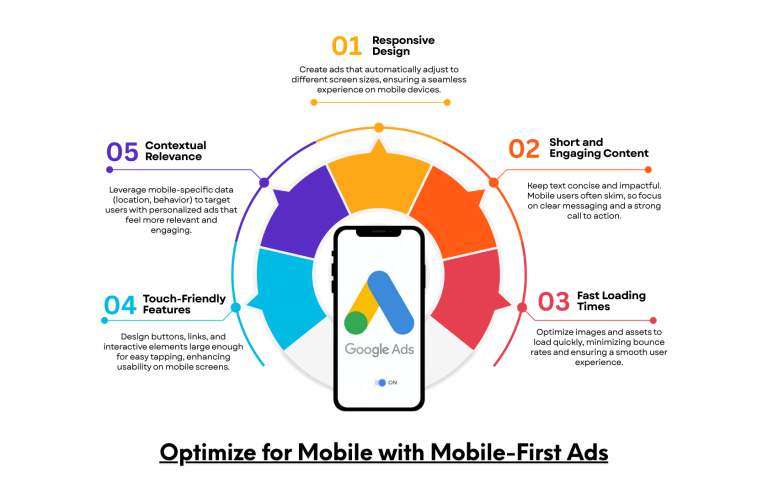
The rise in mobile internet use requires a mobile-friendly strategy for Google Ads. Mobile-first advertising thus guarantees you that the look of the ads will most definitely look the best when displayed in a smartphone. It enables a smooth and seamless experience when using the services.
Best Practices for Mobile-First Ads
Responsive ads:
These adjust according to the screen size, making them visible on different mobile screen sizes.
The landing page must be mobile friendly and fast loading.
Try Location Targeting if it matters to reach users who, later, will visit your business.
Why It Matters:
As more and more search on mobile and purchase there, Google Ads set to optimize for mobile often imply dramatically higher engagement and well above-average conversion rates-even less cost.
Types of Ad Extensions

Sitelink Extensions:
Links to certain pages on your website.
Call Extensions:
Allows users to dial your business directly from the ad.
Location Extensions:
Shows the address of your business and surrounding location.
Callout Extensions:
Short, additional text like “Free Shipping” or “24/7 Support.”
Why It Matters:
Google sponsored ads with extensions do better than regular ads, as they provide more relevant information to potential customers.
Take Advantage of Remarketing to Re-engage Users
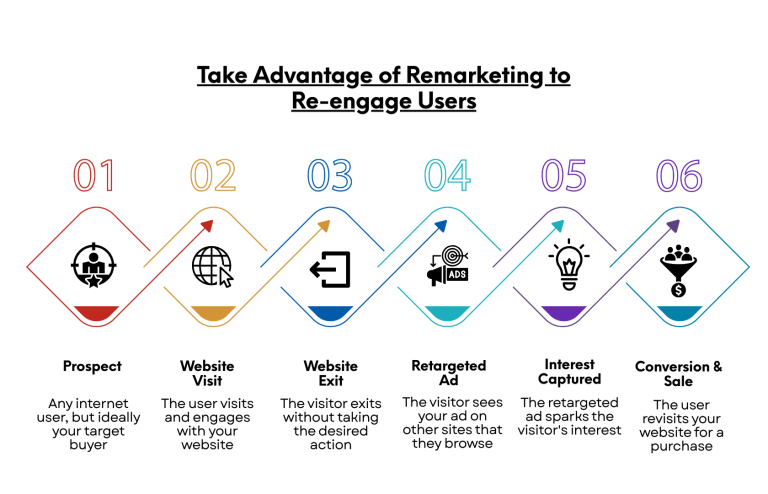
Remarketing is a very powerful method of targeting users who have previously interacted with your website or app but didn’t finish the desired action, like buying. Showing them targeted ads may remind them to come back and complete their transaction.
How to Use Remarketing
Create specific remarketing lists based on actions, like visitors to your product pages or users who added items to their cart.
Create targeted ad copy for these audiences.
Utilize dynamic remarketing by displaying the relevant products or services that they looked at earlier.
Why This Matters:
Remarketing increases conversions by multiple fold as you are marketing to people who are already familiar with your brand.
Split-Test Your Ads for Better Results

You will have to do A/B testing, also known as split testing, to get the best out of your Google Ads campaigns. It helps you identify through different ad copy, headline, or targeting what portion of your ads best performs at execution and help optimize them in the campaigns appropriately.
How To Split-Test Ads
Create variations for your ads with minimal alteration (such as multiple headlines, calls-to action, or display URLs).
Monitor the performance of each variant.
Use the ad copy that performs the best in your campaigns.
Why It Matters:
A/B testing daily can help you continually improve the performance of your ads, cut costs, and increase conversion.
Utilize Google Ads Scripts for Automation

For Advanced Google advertisers, Google Ads Scripts is an excellent channel for the automation of certain tasks and faster data-driven decision-making. You can automate everything from pausing low-performing keywords to adjusting the bids based on some specific criteria.
How to Use Google Ads Scripts
Start with pre-written scripts in the Google Ads Script Gallery.
Create custom scripts to suit the needs of your campaign. For instance, you can use scripts to automatically adjust your bids or change your ad text.
Use scripts to build reports for easier tracking and analysis.
Why It Matters:
Google Ads scripts help save time by automating repetitive work, giving you more headspace to think about the bigger picture of your strategy.
Implement Conversion Tracking to Measure ROI
This would help you know whether the campaigns driven by Google Ads really impact your business. To begin to set up conversion tracking helps you track important actions from purchases, form submission and downloads, and connects that back to your ad spend.
Setup Conversion Tracking:
Identify what to consider as a conversion; whether purchases, form fill, and the likes.
Include the conversion-tracking tag on relevant pages of your site.
Connect Google Ads to Google Analytics for deep dives into your data.
Why It Matters:
Conversion tracking allows you to measure ROI accurately and optimize your Google PPC pricing to campaign by focusing on the most profitable campaigns.
Explore Different Types of Google Ads
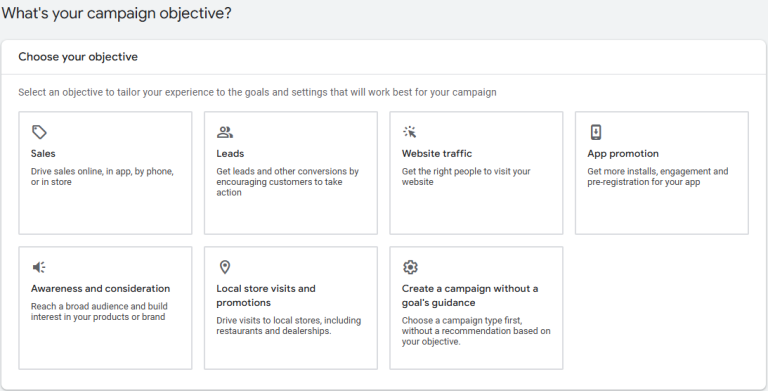
Google Ads also come in different kinds, and the choice you make can grossly impact performance in your business.
Among the popular Google Ads types are

Search Ads:
Text ads that appear whenever people search for specific keywords.
Display Ads:
Banner ads appearing on all types of sites, spreading throughout the Google Display Network.
Shopping Ads:
Product-based ads for ecommerce companies.
Video Ads:
Ads shown before YouTube videos.
Why It Matters:
Some work more efficiently than others toward achieving a specific purpose, whether you aim to raise awareness for your brand, increase traffic, or ultimately, sales.
Regularly Review and Refine Your Campaigns

This process takes a lot of time, and the largest part of your efforts go into creating content, communicating with followers, and performing performance monitoring. This can be affordable only for companies similar to small businesses, and these must have managers handling social media companies. According to the Sprout Social survey, the average time taken is 13 hours a week on behalf of a manager who follows only one or two networks on social media. For small businesses or individuals, that precious time could have been spent on other tasks that are core to the business itself.
Finally, constantly monitor and optimize your Google Ads campaigns. This requires reviewing performance data and fine-tuning your strategies so that your ads remain effective over time.
How to Refine Campaigns
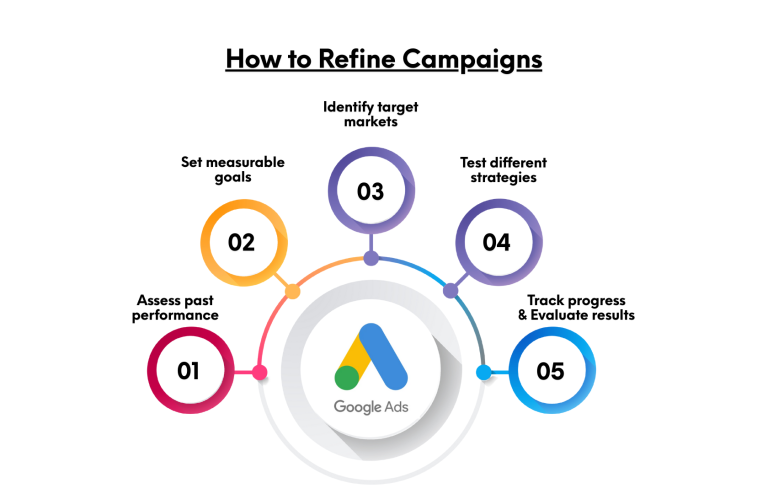
Analyze Google Ads reports so you can measure metrics, such as CTR, or click-through rate and conversion rate.
Pause or adjust low-performing keywords or ads.
Experiment with new ad copy, targeting, or bidding strategies.
Why It Matters:
The successive improvement of success in Google advertising is actually a process of long time. Even expert marketers change for the purpose of adjusting to the latest trends in consumer behavior.
Conclusion
Mastering Google Ads is one of those game changers for marketers looking to push their digital presence. With these 10 advanced tips, you’ll be able to create campaigns that work much better, improve your ROI, and grow your business.
Whether you’re managing a Google ad account or optimizing a Google Ads campaign, this will give you the competitive edge you need. Keep up with new features and tools inside Google Ads and never stop optimizing your tactics. Never forget to track your results, test a few new ideas, and make a great use of these awesome features designed especially for you!
Check other articles of ours for useful tips in your Google Adwords activity, and comment below if any questions occur.
Frequently Asked Questions
- Clearly State Objectives: Provide clear objectives, such as brand awareness, lead generation, or sales.
- Choose Relevant Keywords: Use relevant, high-intent keywords with moderate competition.
- Optimize for Smart Bidding: Always target the performance of automated strategies, such as Target CPA or Target ROAS.
- Make Use of Ad Extensions: Use extensions such as sitelinks, callouts, and location to drive ad visibility.
- Leverage Remarketing: Retarget users who have been on your site to get best conversion.
- A/B Test Ads: Perpetually test different ad versions to determine the best ad copy and format that converts.
Optimize Landing Pages: The landing pages must be relevant, fast loading, and easy to navigate to convert.
- Craft Catchy Headlines: Copy should speak to a user's needs. Make sure headlines are clear and attention-grabbing.
- Use Ad Extensions: Adding sitelinks, call buttons or structured snippets makes the ads more clickable
- Target High-Intent Keywords: Optimize ads for keywords that have a purchase or action intent so that they capture ready-to-convert users
- Optimize for Mobile: Design ads to be mobile-friendly: Some users search using their smartphones.
- Highlight Unique Selling Points: Offers and discounts perhaps unique benefits which sets you apart from your competitors.
Effective Bidding Strategy lets you position your ads strategically on the page.
- Competitively Bid: Strategies for position on page- an appropriate plan for ad campaign.
- Improve Quality Score: high keyword and ad copy and landing page relevance.
- Optimize Ad Copy: word your ad text to incorporate keywords, and write compelling copy to increase CTR.
- Use Ad Extensions: adding extensions to make ads more comprehensive may boost ad rank.
- High on CTR: The more relevant ads rank higher.
- Refine Keywords: Add winning keywords and eliminate poor rankers.
- Focus on Relevant Keywords: Choose keywords highly relevant to users' intent.
- Write Strong Calls-to-Action: Use calls-to-action such as "Shop Now" or "Learn More" that tend to provoke people into clicking the ad.
- Use Emotional Triggers: Using words like "limited time", "exclusive," or "now" can really stimulate sense of urgency.
- Utilize Ad Extensions: Add extra information to ads, and they become more attractive and clickable.
- Segment by Audience: Target specific audience groups with their own messaging for increased engagement.
- Test multiple ad copies: A/B test headlines, descriptions, and CTAs to see what performs better.
- Monitor regularly: Monitor performance metrics that include CTR, CPC, and conversion rate.
- Adjust a proper bidding strategy: Set one that best meets your needs based on campaign requirements- like maximize conversions or click-through rates.
- Utilize the use of negative keywords: Keep out keywords that will lead to waste spends of resources and have your ads presented better.
- Ad copy is refreshed and tested: Just refresh it, but test new ones as well to learn which will deliver the most desired outcome.
- Refine Audience Targeting: Based on the audience insights, reach better users who are closer to the desired conversion.
- Optimize Landing Pages: Ensure landing pages are fast, relevant, and user-friendly in order to improve the user experience.